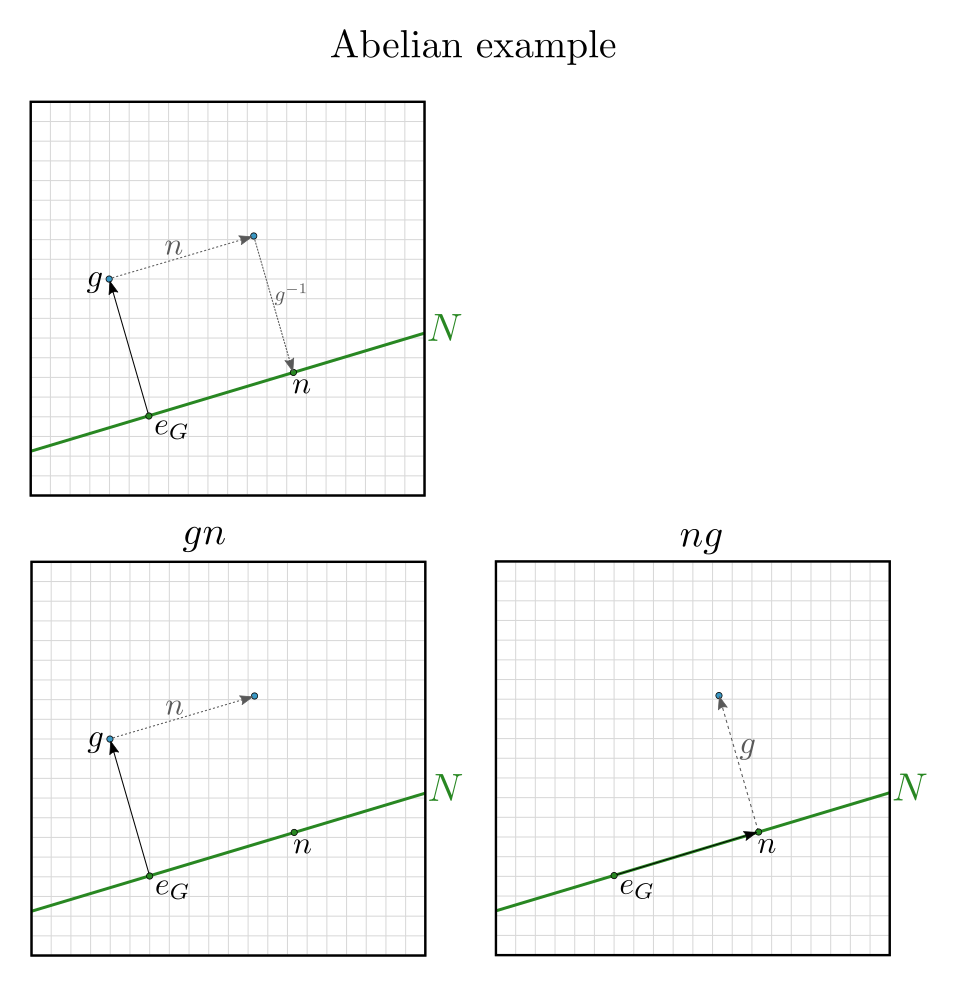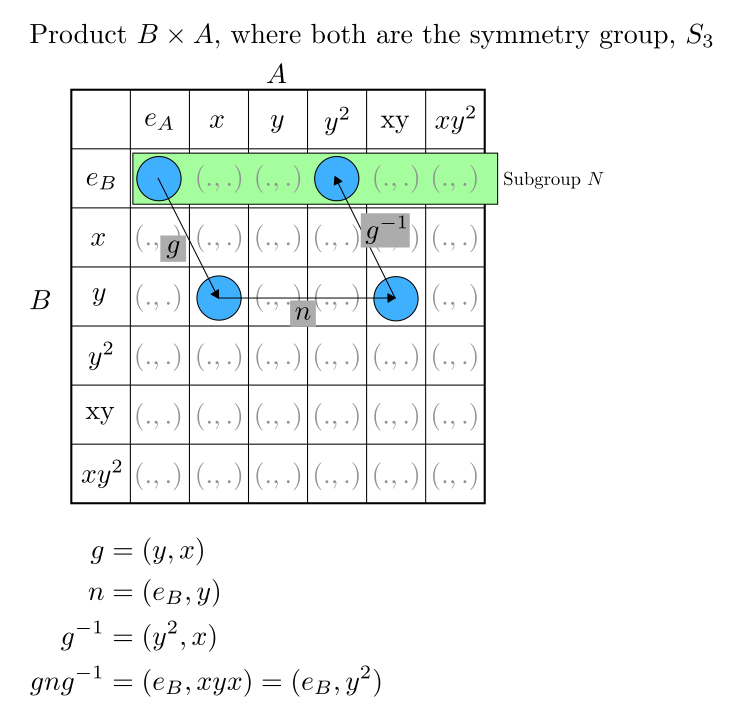Math and science::Algebra::Aluffi
Normal subgroup
Normal subgroup
Let \( G \) be a group and \( N \) a subgroup of \( G \).
\( N \) is said to be normal iff:
\[ \forall n \in N, \forall g \in G, \; gng^{-1} \in N \]
Or equivalently:
\[ N \text{ is normal } \iff \forall g \in G, \; gN = Ng \]
\( gN \) is syntax for \( \{ a : a = gn \text{ for some } n \in N \} \), and \( gN = Ng \) does not imply commutativity.
Example
Abelian normal subgroup

Note how in the Abelian case, \( gng^{-1} = n \), which is a stronger result than \( gng^{-1} \in N \).
Non-abelian normal subgroup
Products have non-abelian normal subgroups.

